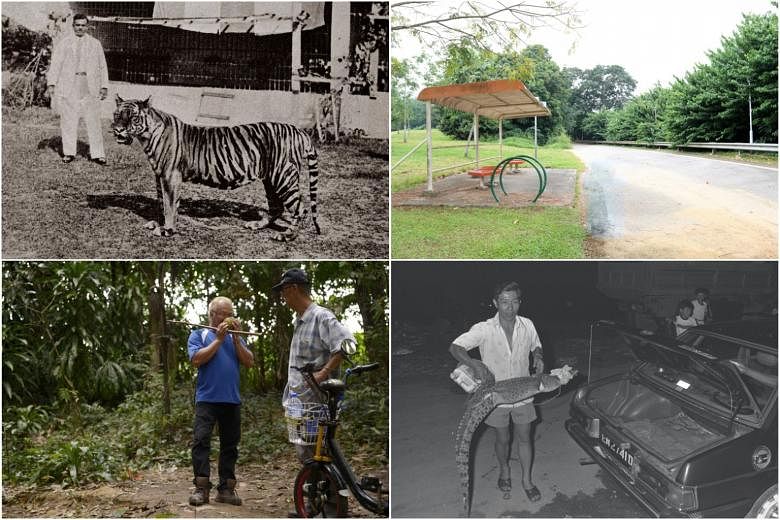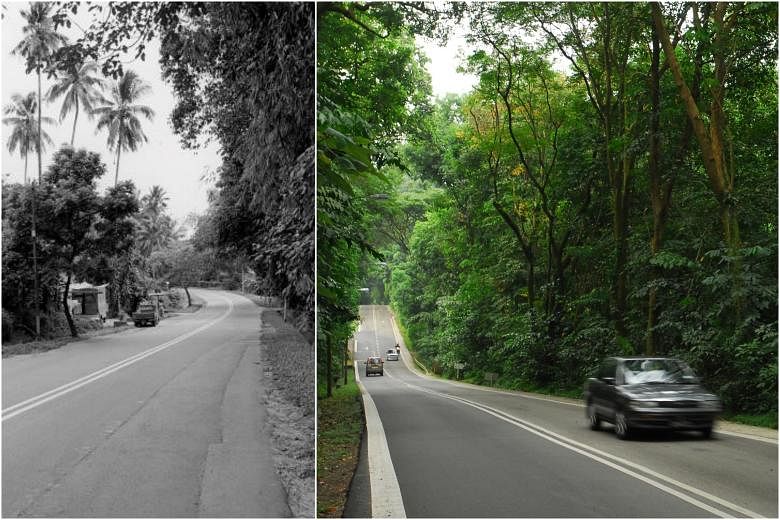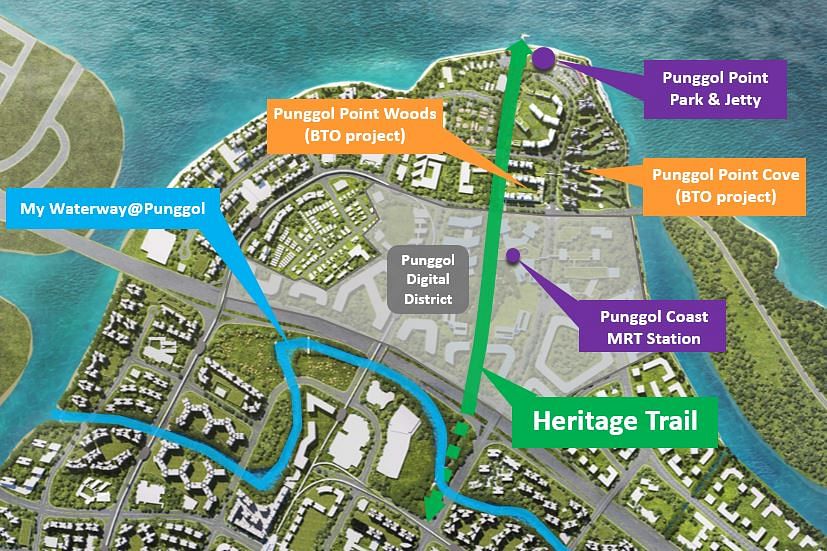SINGAPORE - A new heritage trail will be one of the key features in Punggol Point District, a waterfront precinct comprising two new housing projects that will be launched in August.
Located along Old Punggol Road, once the main transport route for farmers and fishermen plying their wares from Punggol to Serangoon, the trail will pay tribute to the road's history.
A 1.5km stretch will be pedestrianised to offer a seamless connection from MyWaterway@Punggol to Punggol Jetty, the Housing Board said on Sunday (Aug 26).
Here are five interesting facts about Old Punggol Road.
1. Great durian spot
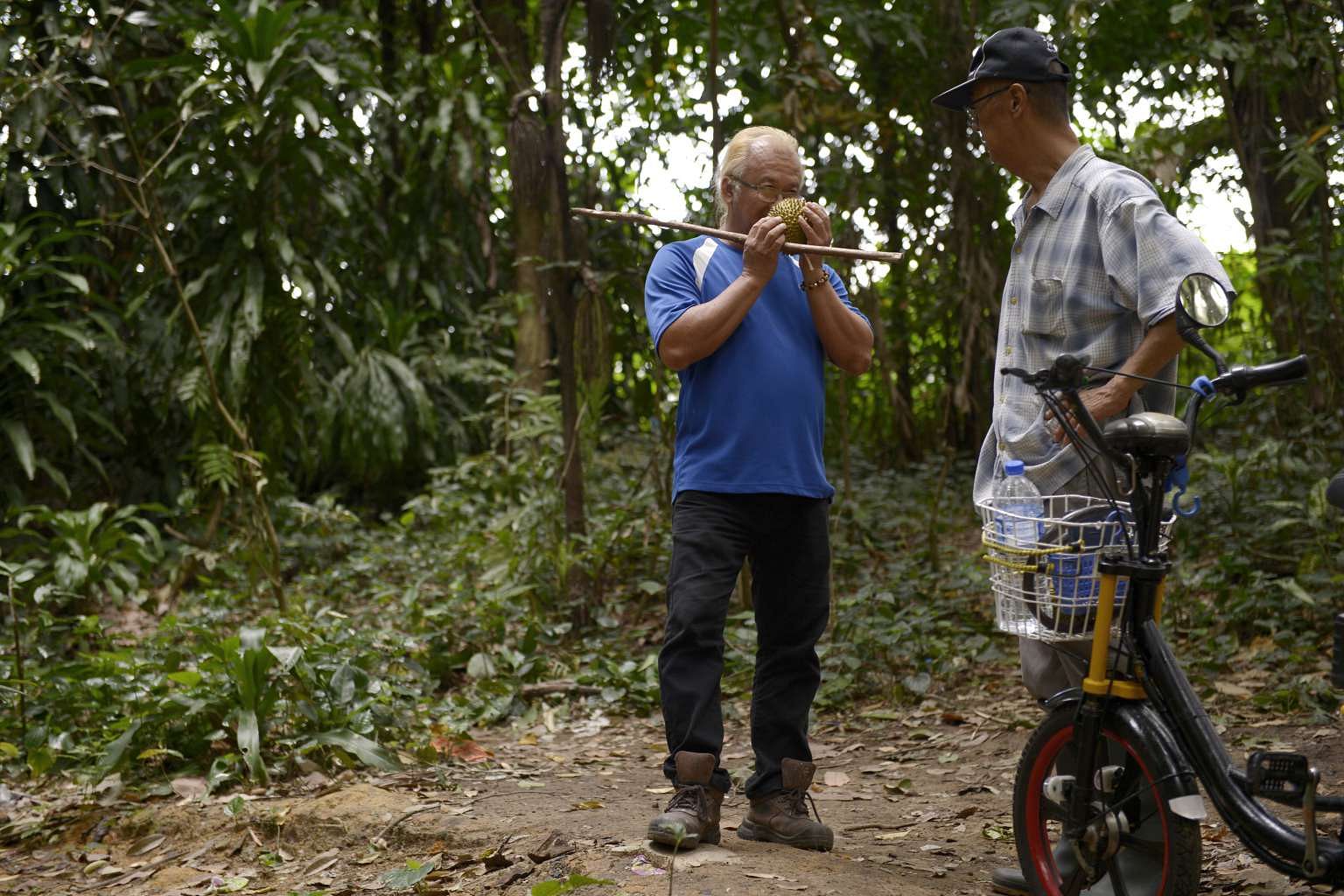
The forested area in Old Punggol Road was one of the hidden spots in Singapore where durian hunters would go and wait for free, delicious durians to drop.
In 2015, The Straits Times photojournalist Desmond Lim followed a group of such durian hunters into the Old Punggol Road area where some hunters would wait for up to eight hours for durians to drop. According to them, the taste of durians from the Punggol area is so good that once a person has tried it, he will not want to eat durians from Malaysia again.
While HDB has confirmed that the leafy trees along Old Punggol Road will remain, it is unclear how many of those will be durian trees.
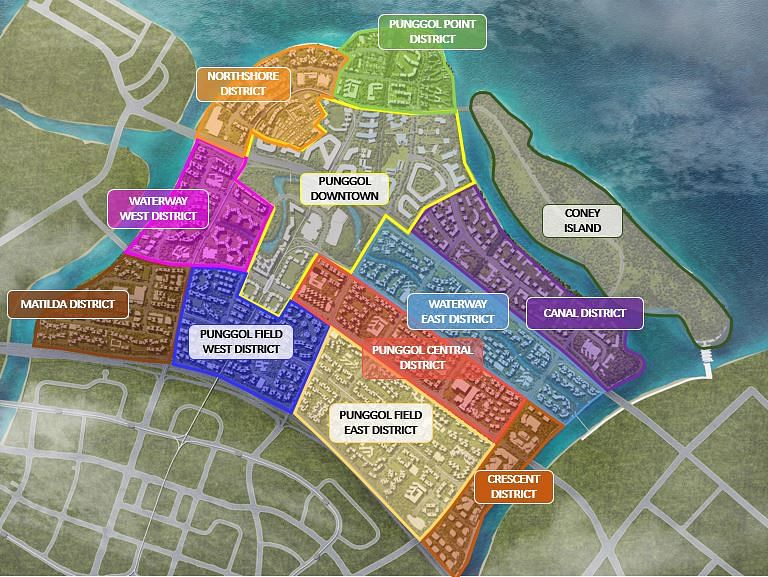
2. Crocodile terror
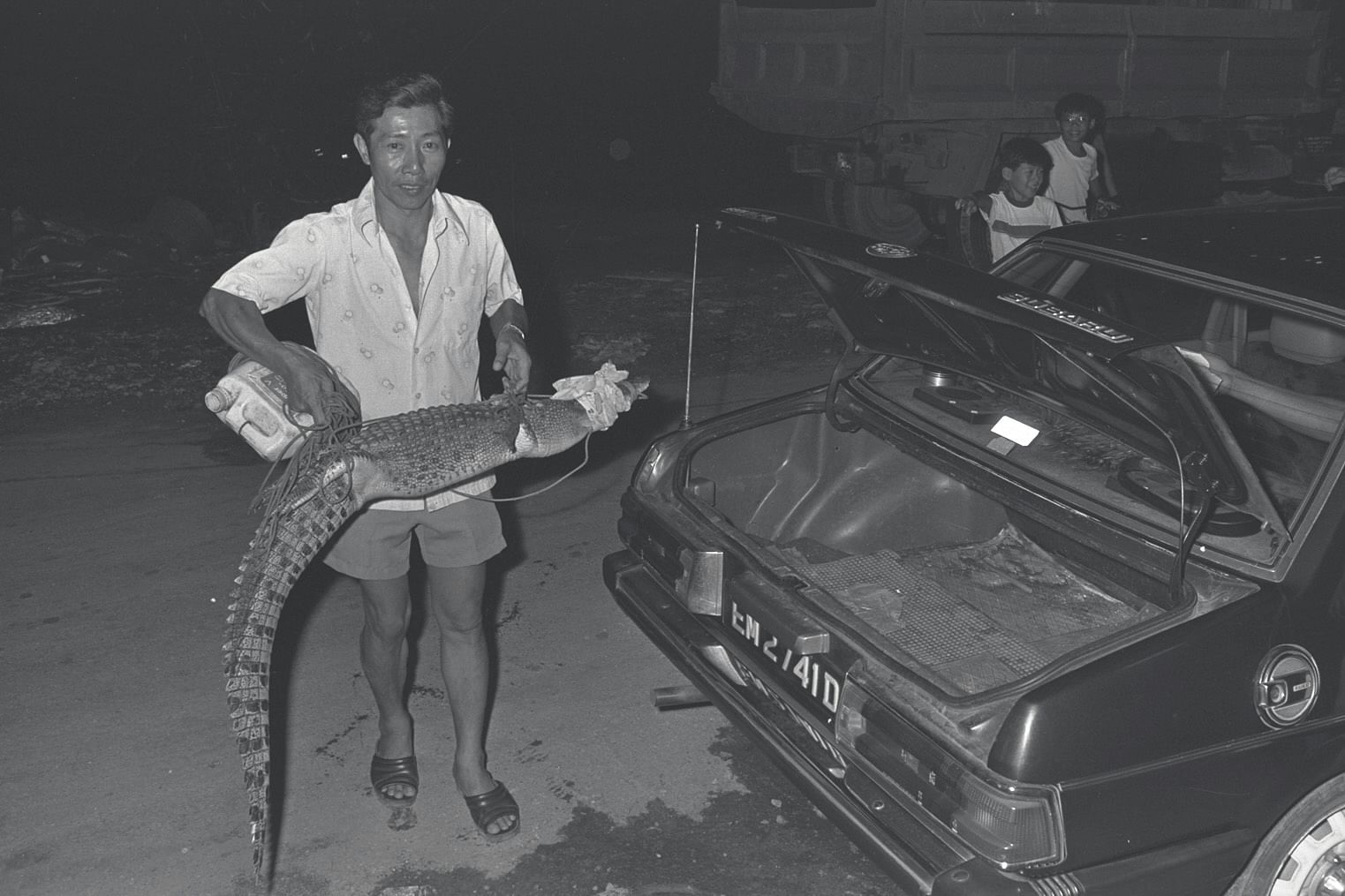
In 1960, a stretch of Old Punggol was terrorised by a 6m-long crocodile. A series of articles by The Straits Times had chronicled the fear that gripped a Punggol fishing village in March that year.
The crocodile was first spotted in mid-March by some fishermen, following which residents in the area kept nightly vigils in sampans with shotguns, hoping to kill the beast. A 15-year-old boy was wading out to sea to help his fisherman father when he came face to face with the crocodile which surfaced and opened its mouth. The boy escaped unscathed.
A week later, the same crocodile reappeared with a mate and villagers were so terrified that they eventually sought help from the police for protection.
3. Ponggol Zoo
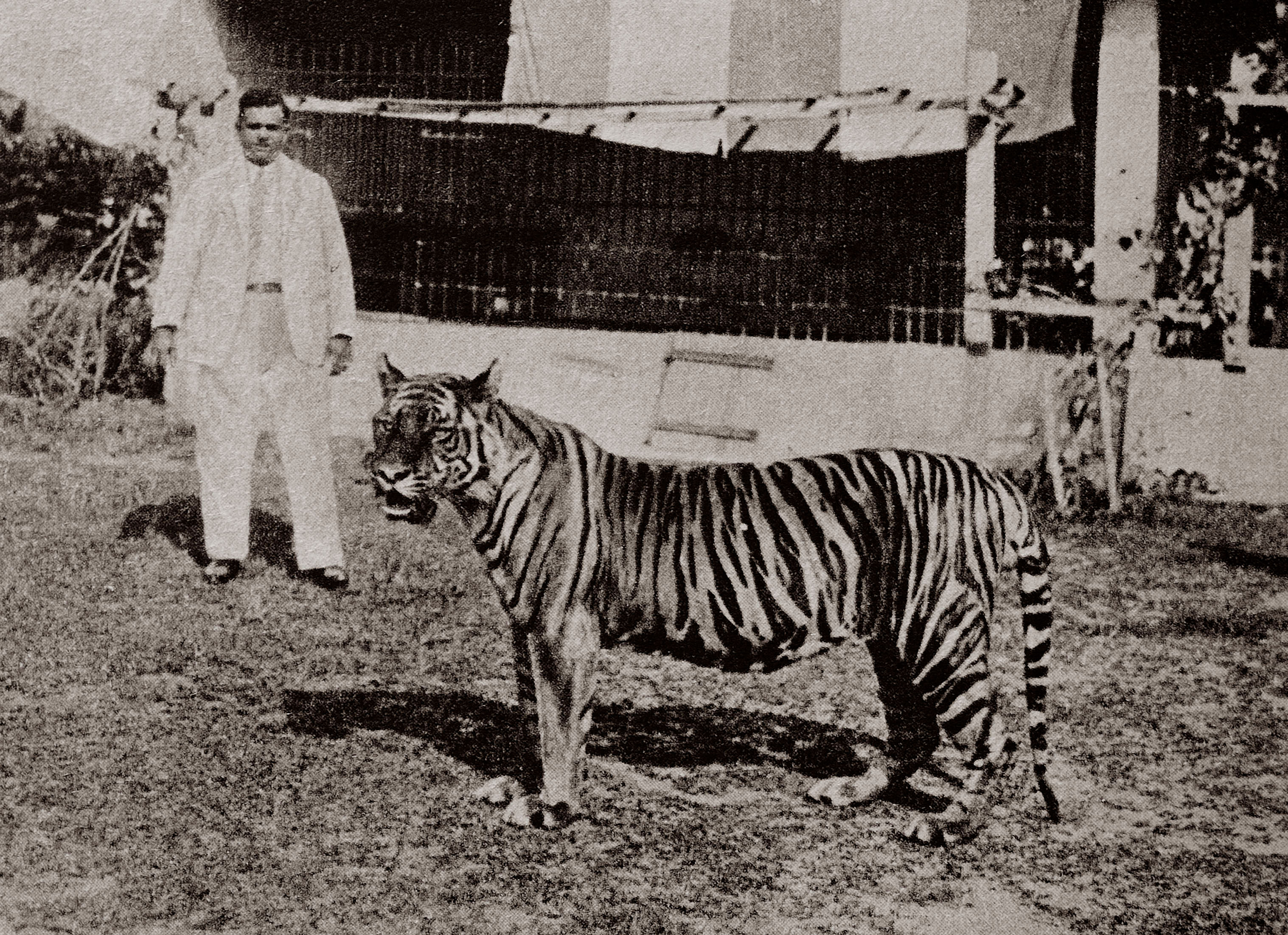
Punggol was home to one of Singapore's first public zoo, set up in 1928 by Indian estate owner William Lawrence Soma Basapa. It was originally located in Serangoon Road before moving to a 11ha seafront estate in Punggol.
With a collection of 200 animals and 2,000 birds, Ponggol Zoo was a major attraction both nationally and internationally in pre-war Singapore. It cost $35 to run a day and charged an entrance fee of 40 cents.
Among the zoo's highlights were a tiger named Apay, Phyllis the orangutan, three seals imported from California and a pair of polar bears from Germany.
However, the zoo's glory was brief. At the start of World War II, the British moved their forces to the north of Singapore in anticipation of invading Japanese forces. Mr Basapa was given 24 hours to relocate his animals and birds. The time frame was too tight so the British took the land, released the birds and shot the rest of the animals.
4. Dark past of bloodshed
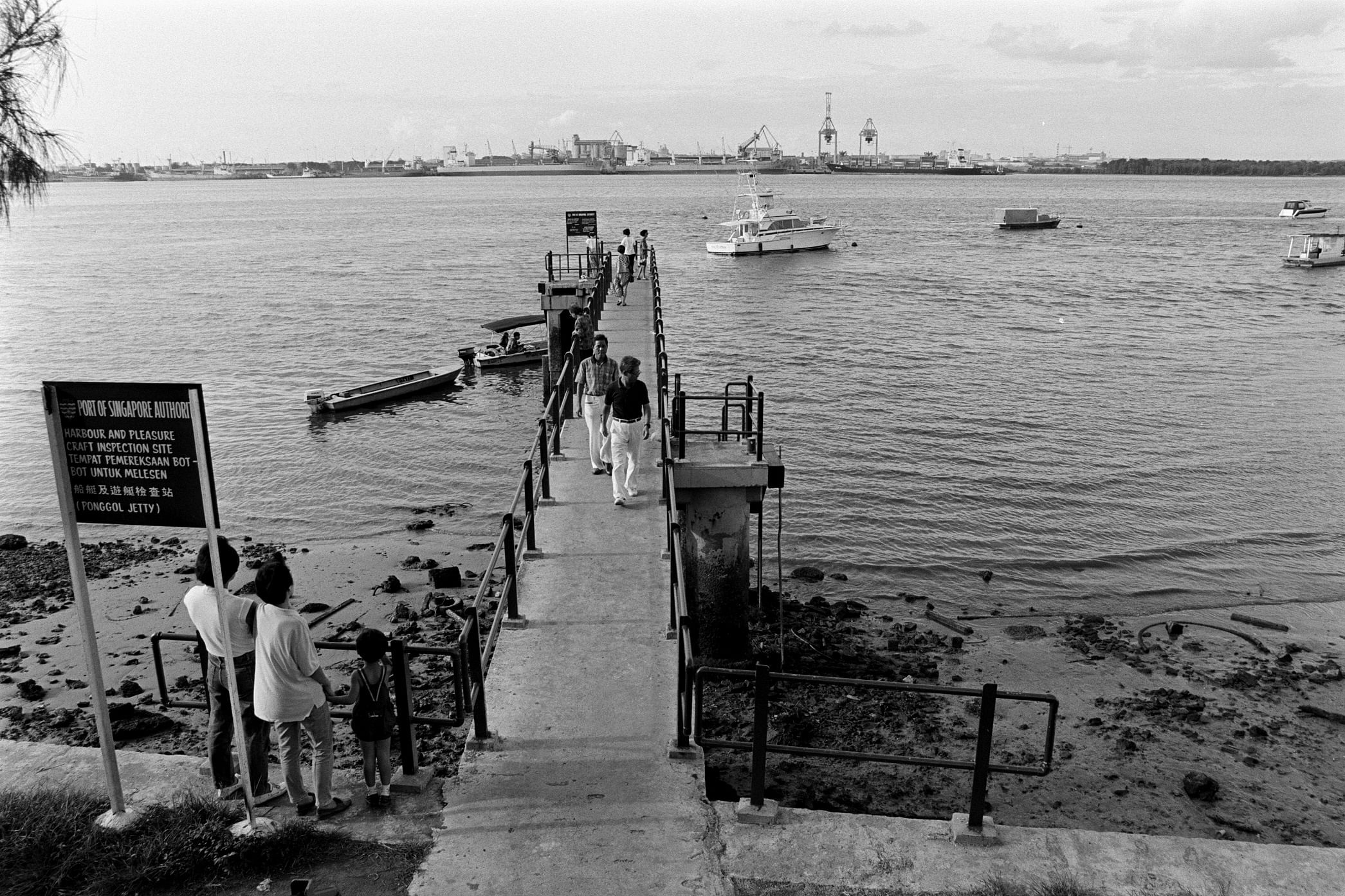
At the end of the road, near Punggol Jetty, is Punggol Beach. While the beach is now bustling, with seafront dining establishments like The Punggol Settlement, it was once known as one of the spots of the Sook Ching Massacre.
During World War II, on Feb 28, 1942, 400 Chinese civilians were slaughtered on the beach by Japanese forces. The beach is listed by the National Heritage Board as a historical site.
5. Old-school bus stop
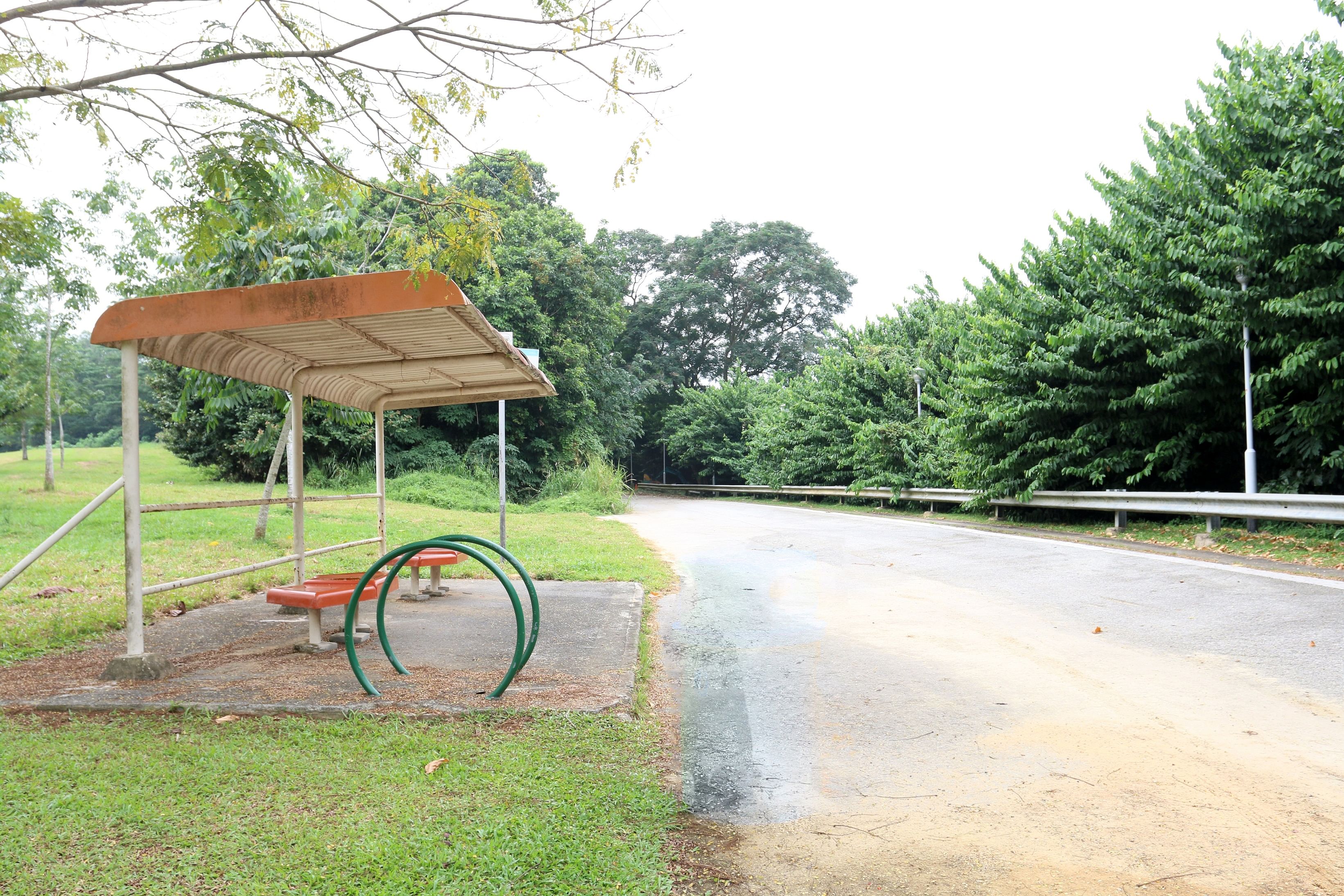
An old bus stop, with its iconic orange and off-white roof, which used to serve the only two buses - services 82 and 83 - that plied the area, will be retained as a rest stop along the trail.
HDB said the road's rustic ambience, green tunnel effect and undulating terrain will be preserved through a 10m green buffer zone on both sides of the carriageway.
